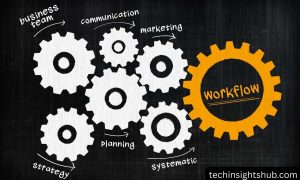The digital landscape shifts faster than most businesses can adapt. Without proper planning, yesterday’s innovative solution becomes tomorrow’s liability. Smart business owners know this reality all too well. They’ve watched competitors surge ahead with better tech while others fell behind. The gap widens daily between companies that prepare and those that react. What makes the difference? A future-ready IT infrastructure that grows with your business. Many companies mistakenly treat technology as a one-time purchase. This mindset leads to costly problems down the road. Your systems should evolve alongside your company’s changing needs. This article outlines key strategies for businesses to future-proof their infrastructure for growth.
Embracing Scalability and Flexibility

Your business needs will change, and this truth drives all IT planning decisions. Scalable infrastructure grows with your company without massive overhauls each year. Think of it as building a house with room for expansion.
Cloud Computing: The Foundation of Scalability
Cloud platforms let you adjust resources as needed. You pay for what you use today while keeping options open for tomorrow. No more guessing about future hardware needs or wasting money on unused capacity.
Most cloud providers offer automatic scaling features. These tools increase resources during busy periods and scale down during quiet times. The result? Cost savings without performance issues during peak loads.
Small businesses benefit most from this approach. They can access enterprise-level resources without massive upfront costs. Companies like Dropbox started with basic cloud services before building their own systems later.
Modular Infrastructure Design
Breaking your infrastructure into smaller, independent components makes updates easier. Each piece can be improved or replaced without disrupting the entire system, preventing the “house of cards” scenario where one change breaks everything.
Software-defined networking represents this principle in action. It separates network control from physical hardware through programming. As needs change, the network becomes flexible and easier to modify.
Modern businesses should avoid monolithic systems whenever possible. Instead, choose platforms that work well with others through standard protocols. For example, your marketing team’s software should talk to your sales platform without custom coding.
Hybrid Approaches for Practical Transition
Few companies can completely rebuild their infrastructure overnight. Hybrid models combine existing systems with newer technologies. This practical approach protects previous investments while moving forward.
For instance, keep sensitive data on local servers while moving customer-facing applications to the cloud. Or retain specialized legacy systems while building new capabilities on modern platforms. The key is having a clear transition plan.
Integrating Emerging Technologies
Smart technology adoption gives businesses a crucial advantage. Not every new tool deserves your attention. However, some innovations truly transform operations when properly implemented.
How AI Transforms Infrastructure Management
Artificial intelligence reduces manual intervention in IT operations. AI-driven tools spot patterns humans might miss in system performance data. They predict problems before they affect your business.
Modern AIOps platforms automatically adjust resources based on actual usage patterns. They learn what’s normal for your business and respond accordingly. This capability means fewer middle-of-the-night emergencies for your IT team.
The real power comes from combining AI with human expertise. Let automation handle routine tasks while your staff focuses on strategic improvements. This partnership delivers better results than either approach alone.
Edge Computing for Responsiveness
Edge computing brings processing power closer to where data originates. This approach reduces delays by handling time-sensitive operations locally, making customer interactions feel snappier.
Retail businesses use edge systems to personalize shopping experiences instantly. Manufacturing operations monitor equipment health without sending everything to distant data centers. These capabilities matter for customer satisfaction.
The growth of smart devices makes edge computing increasingly important. Your infrastructure should support both centralized and distributed processing models. This flexibility allows quick adaptation as needs evolve.
Building Integration Capabilities
Future technologies will emerge that we cannot predict today. Your infrastructure needs built-in connection points for these unknowns. Open APIs and flexible integration tools protect your investments.
Many European banks learned this lesson during digital transformation projects. Those with closed systems struggled to add mobile banking features quickly. Others with integration-ready platforms adapted faster and retained more customers.
Always question vendors about their integration philosophy. Choose partners who demonstrate a commitment to open standards. Avoid technologies that create dependency on a single provider.
Investing in Cybersecurity
Growth brings increased security risks. More users, connections, and data mean more potential vulnerabilities. Security planning must happen alongside growth initiatives.
Developing a Security-First Mindset
Security measures work best when built into systems from the beginning. Retrofitting protections later costs more and leaves gaps. Make security assessment part of every IT decision.
This approach doesn’t mean rejecting helpful technologies. It means understanding risks before implementation. Cloud solutions offer tremendous benefits when configured properly, but security failures regularly make headlines.
Create clear security policies for your entire organization. Everyone should understand their role in protecting company assets. Regular training turns employees from vulnerabilities into defenders.
Implementing Multi-Layered Protection
No single security measure provides complete protection. Effective strategies combine multiple approaches. Think of it as having both locks and alarms rather than relying on just one.
Start with basic access controls and authentication systems. Add network monitoring tools that spot unusual behavior. Implement data encryption for sensitive information. Each layer catches what others might miss.
Even small businesses can implement meaningful protection without massive budgets. Start with fundamentals and build over time. Consistent attention matters more than fancy tools.
Planning for Recovery
Perfect protection remains impossible despite best efforts. Smart businesses prepare for security incidents before they happen. Having recovery plans reduces financial risk and downtime.
Document response procedures for different types of incidents. Practice these scenarios regularly with your team. Identify which systems need priority restoration after problems. Preparation transforms disasters into manageable challenges.
If your team lacks security backgrounds, consider working with specialized expertise. Many service providers offer assessment and planning help at reasonable costs. This investment prevents much larger expenses later.
Building a Culture of Innovation
Technical solutions alone don’t future-proof your business. You need people who embrace change and seek improvements. Cultural factors determine whether your infrastructure evolves or stagnates.
Encouraging Experimentation
Create safe spaces for trying new approaches. Not every idea will succeed, but breakthrough improvements never happen without experimentation. Budget specifically for innovation projects.
Some retail banks dedicate resources to testing emerging technologies without immediate profit pressure. This approach led one institution to adopt blockchain early for certain transactions, gaining years of experience while competitors waited.
Reward staff who suggest improvements, even when ideas don’t succeed. The goal is to generate options for future growth. Sometimes, the third or fourth attempt unlocks tremendous value.
Developing Technical Talent
Your team needs ongoing learning opportunities. Technology changes too quickly for one-time training. Build continuous education into your business operations.
Consider partnerships with educational institutions when budgets limit formal training. Many community colleges offer specialized IT programs with internship components. These relationships create talent pipelines for your company.
Remember that exceptional talent rarely comes cheap. Budget appropriately for the skills your future growth requires. Sometimes, one competent person delivers more value than three average performers.
Aligning Infrastructure with Business Goals
Technical decisions should directly support strategic objectives. Every major infrastructure investment deserves a clear business justification. This alignment prevents wasted resources.
Involve both technical and non-technical leaders in planning discussions. Each brings important perspectives to the table. Technical experts understand possibilities while business leaders clarify priorities.
Regularly review infrastructure performance against business metrics. Are your systems truly enabling growth or creating bottlenecks? Honest assessment drives meaningful improvements.
Monitoring Trends and Adapting Strategy
The digital landscape never stops evolving. Staying informed about key trends gives your business crucial advantages. Make learning part of your operational routine.
Establishing Monitoring Systems
Implement tools that provide real-time insights into your infrastructure performance. These systems highlight potential issues before they affect customers, and data-driven decisions beat guesswork every time.
Modern monitoring platforms track more than just uptime. They measure user experience factors like response time and transaction completion. These metrics reveal whether your systems truly support business needs.
Set clear performance thresholds with automatic alerts. This approach reduces the monitoring burden on your team, allowing them to focus on solutions rather than constant system checking.
Keeping Pace with Industry Changes
Follow industry news sources and analyst reports in your field. These resources highlight emerging technologies worth consideration. They also warn about approaches losing support.
Join professional organizations where IT leaders share experiences. The manufacturing industry has several groups focused specifically on technology modernization. Their members share practical insights about what actually works.
Consider periodically bringing in consultants for an external perspective. Outside experts often spot opportunities internal teams miss, and their broad experience across multiple companies provides valuable context.
Planning Regular Review Cycles
Schedule infrastructure strategy reviews at least annually. Technology moves too quickly for static five-year plans, and regular assessment keeps your approach relevant.
During these reviews, examine whether existing systems still meet business requirements. Identify components approaching end-of-life or capacity limits. Develop transition plans before emergency replacements become necessary.
These sessions should include forward-looking discussions about upcoming business initiatives. Will your current infrastructure support next year’s growth plans? Honest answers guide investment decisions.
Conclusion
Future-proofing your IT infrastructure requires balanced attention to technology, people, and processes. The businesses that thrive embrace scalable solutions and remain adaptable. They build security into every aspect of their operations.
The strategies outlined here work for companies at any growth stage. Start where you are with the resources available. Even small improvements compound over time into significant advantages.
Remember that infrastructure exists to support business objectives. The most technically impressive system brings little value if it doesn’t enable growth. Keep that perspective as you build for the future.
The digital landscape will continue changing at accelerating rates. But with thoughtful planning and regular adaptation, your business can turn technological change from a threat to an opportunity. The future belongs to the prepared.
Also Read: How CIS Hardened Images Secure Systems and Reduce Costs
FAQs
Allocate 3-5% of total revenue for technology, including infrastructure. Adjust higher during major transformation projects or growth phases.
Not universally. Some businesses benefit more from hybrid approaches. Evaluate based on your specific security, compliance, and performance requirements.
Conduct formal reviews annually at a minimum. Schedule additional assessments before major business initiatives or after significant market changes.
Treating it as a one-time project rather than an ongoing process. Technology needs evolve continuously alongside your business.




